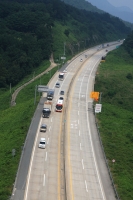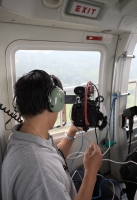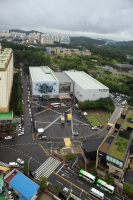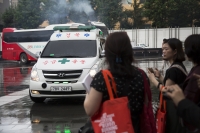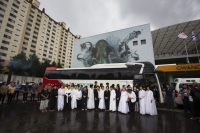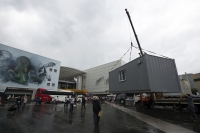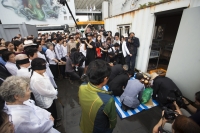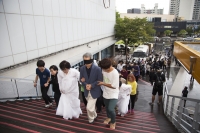Navigation ID, 2014
Opening performance for the 10th Gwangju Biennale "Burning Down the House"
Livestream at O My News
When the Korean War broke out in 1950, the South Korean government led by Rhee Syngman committed a series of nation-wide massacres, taking the lives of civilians who had been members of the Bodo League, a forced re-education program for suspected sympathizers to the North and political opponents to the regime, and those who had been accused of being traitors that had helped the Korean People’s Army from the North, along with those were housed in corrective facilities. Among the victims, those that were massacred in Jinju and at a cobalt mine in Gyeongsan in the summer of 1950 under circumstances that remain unclear. Dubious claims and accusations were made during a time when many were wrongfully accused of being communist or potential collaborators with the soldiers from the North. The victims were slaughtered without following any legitimate process, leaving the families of the deceased as a community of people who are under oppression and put under a taboo.

View from inside of Jinju container's shelves,
the remains of Jinju civilian massacre's victims during the Korean War 1950
Excavation date: 2014.2.24~3.2
Photo by Minouk Lim
Navigation ID, an intervention by Minouk Lim, brought two shipping containers to the public square in front of the Biennale Halls. The containers held the remains of massacre victims, remains that have been carefully gathered by their relatives in an attempt to bring recognition and respectful burial as well as the remains that have been left over after the dissolution of the Truth and Reconciliation Commission.
At the opening of the 10th Biennale, the containers and a bus carrying the families of the deceased have arrived, escorted by a helicopter and ambulances – a simulation of the emergency that such untold and unrecognized deaths are due. The family members of the massacre victims was greeted by the mothers of those who died in the May 18 Democratic Uprising. They have been guided to the Exhibition Hall 1 by ‘Mother’s House of the May'. The whole process was streamed live on OhmyNews a popular Korean news website.
Navigation ID is produced in collaboration with Doctor Sunghoon Han, a professor at the Institute for History and Space Studies at Yonsei University, who previously worked on the Truth and Reconciliation Commission. Additional help in realizing the work came from the families of the victims in a number of local provinces, the Mothers’ House of the May, and the Gwangju Trauma Center.
